The SilverStone FX500 Flex-ATX 500W PSU Review: Small Power Supply With a Big Bark
by E. Fylladitakis on November 12, 2020 9:00 AM EST- Posted in
- Cases/Cooling/PSUs
- PSUs
- 80Plus Gold
- SilverStone
- 500W
- Flex ATX
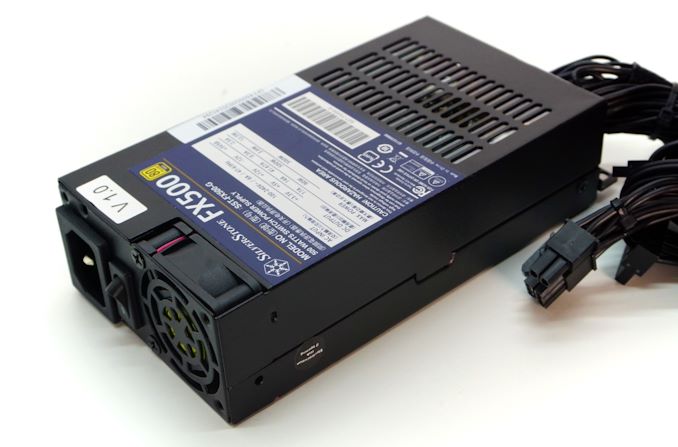
As one of the best-known companies in the high-end PC peripherals business, SilverStone needs little introduction. The company has made a name for itself with its variety of boutique products, especially off-beat and compact designs. And, even though the company has diversified over time into several other segments of the market, their unique cases and assorted power supply units (PSUs) remains their most defining product lines to this day.
It's a field that SilverStone has become so entrenched in that although other companies produce compact PCs and related peripherals as well, none of them are really trying to be SilverStone's peer. As a result, SilverStone is one of the very few companies with a true variety of small form factor power and cooling solutions, rather than just a token device or two. Even with relatively standard, ATX-compliant equipment, SilverStone’s power products tend to have great power-per-volume ratios.
For today’s review, we are taking a look at the FX500, a very different PSU than the typical ATX fare that we typically cover. SilverStone’s FX500 is a Flex-ATX format PSU, with the tiny physical proportions that entails, and yet can output up to 500 Watts while meeting 80Plus Gold efficiency standard. Few OEMs – let alone retail companies – bother to develop advanced PSU platforms that are smaller than the full ATX format, making compact PSUs an underserved market. All told, we have seen a few high-end SFX units in the past couple of years, but nothing smaller or even different than that. This makes the the Flex-ATX FX500 a very rare product, as one of the only high-power Flex-ATX PSUs on the market.
| Power specifications ( Rated @ 40 °C ) | |||||
| AC INPUT | 100 - 240 VAC, 50 - 60 Hz | ||||
| RAIL | +3.3V | +5V | +12V | +5Vsb | -12V |
| MAX OUTPUT | 14A | 17A | 41.67A | 2.5A | 0.3A |
| 90W | 500W | 12.5W | 3.6W | ||
| TOTAL | 500W | ||||
Packaging and Bundle
SilverStone supplies the FX500 PSU in a simple cardboard box that is half the size of boxes designed for ATX products. The artwork on the box is simplistic, with a plain blue/white color theme and a picture of the PSU itself on the front side of the box. Inside the box, the PSU is merely wrapped in a bubble bag, with SilverStone betting that its small proportions and low weight are enough to prevent damage during transport.
Inside the box, we found only the basics that come with any retail PC PSU. Altogether, the PSU comes with four mounting screws, an AC power cable, and basic instructional leaflets. There are no cable straps, cable ties, or other accessories of any kind.
| SilverStone FX500 | ||
| Connector type | Hardwired | Modular |
| ATX 24 Pin | 1 | - |
| EPS 4+4 Pin | 1 | - |
| EPS 8 Pin | - | - |
| PCI-E 6+2 Pin | 2 | - |
| PCI-E 8 Pin | - | - |
| SATA | 4 | - |
| Molex | 3 | - |
| Floppy | 1 | - |
The SilverStone FX500 Flex-ATX 500W PSU
External Appearance
A mere glance on the FX500 once unpacked is enough to leave most experts wondering how a designer managed to fit a platform with 80Plus Gold efficiency at 500 Watts inside such a small chassis. The body of the FX500 is merely 81.5mm/3.21" (W) × 40.5mm/1.59" (H) × 150mm/5.91" (D), occupying barely a quarter of the volume of a typical ATX PSU. Even its own cables take up more space than the body of the PSU itself.
The sticker with the unit’s electrical certifications and specifications covers most of the top surface, with intake airflow vents on the rest. Despite the very limited design options, SilverStone’s engineers did try their best to make this PSU aesthetically appealing. As a result, the FX500 has an all-black chassis, cables, and connectors. The cables are of “flat” type, without external sleeving, in an effort to minimize their volume as well.
SilverStone’s engineers managed to fit a switch next to the AC receptacle at the rear side of PSU. Concerning the tiny proportions of the unit, even the presence of a switch must have been a design challenge. The tiny 40 mm cooling fan of the PSU covers the rest of the rear side’s surface and is supplied by YS Tech, whose products we frequently encounter into middling-to-premium range PSU products.
Internal Design
The OEM behind the platform of the FX500 is Channel-Well Tech (CWT), a company that developed and marketed several Flex-ATX platforms for 1U systems in the past. Yet none of those were as powerful as this variant. The textbook filtering stage is crammed and shielded right behind the AC receptacle, which comes as no surprise due to the lack of space.
There is only one significantly-sized heatsink inside the PSU, which is used to cool the two transistors that form a typical half-bridge primary inversion stage. The primary APFC capacitor is a 400V/220μF electrolytic capacitor made by Nippon Chemi-Con and is supported by a very sizable coil that takes almost as much volume as the main transformer of the PSU does.
The secondary side conversion stage is also simplistic, with just a couple of MOSFETs generating a single 12V line. The rest of the voltage lines are being generated by DC to DC converters that are mounted on secondary boards. Nearly all of the secondary capacitors are solid-state polymer products and are supplied by APAQ, a Taiwanese manufacturer. The cables are soldered directly near the edges of the main PCB. The PSU’s designer clearly had no hope of making this platform into a modular design without increasing the unit’s length – there is simply not enough space for the connectors.


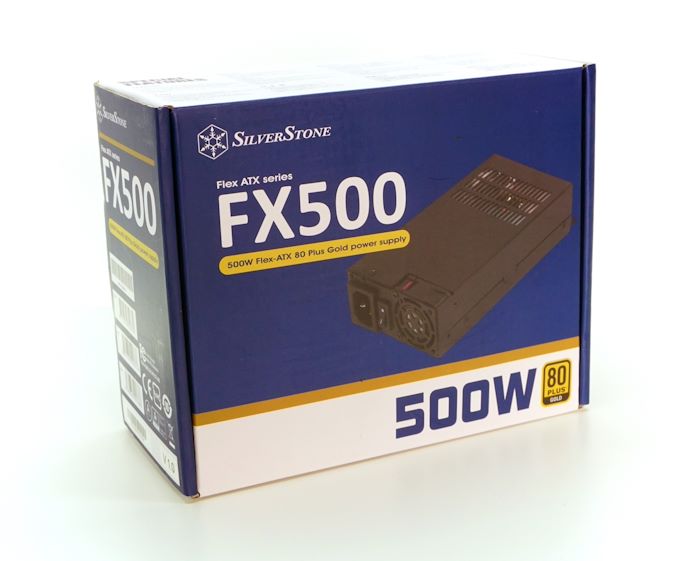
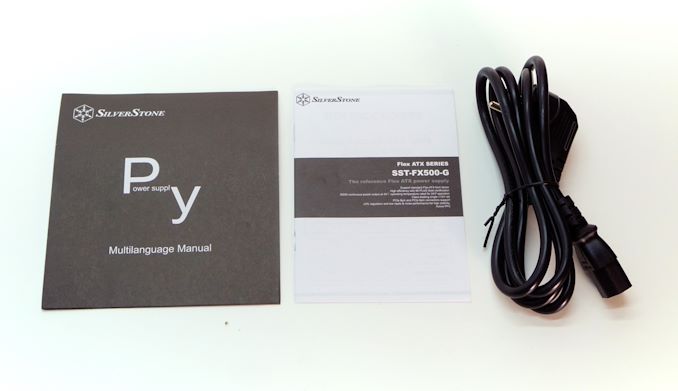
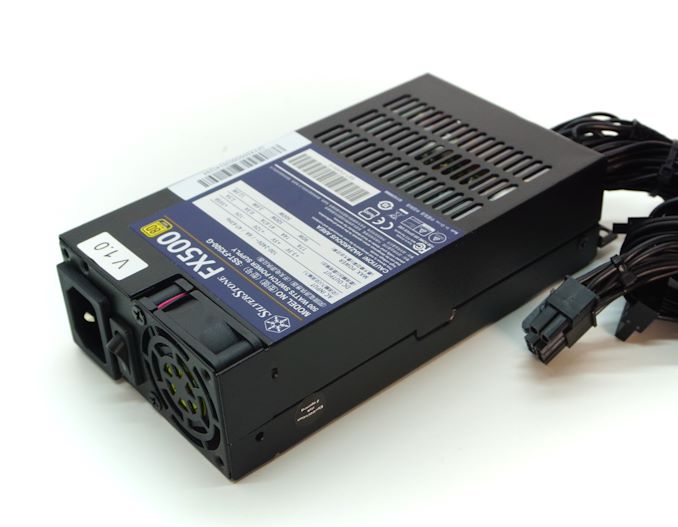
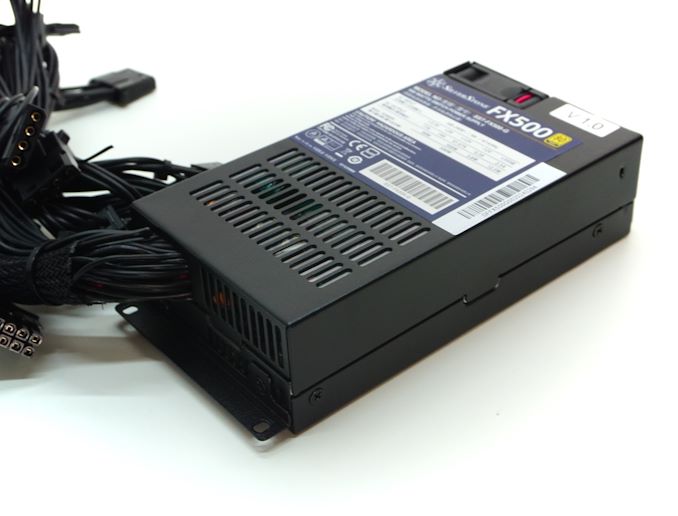
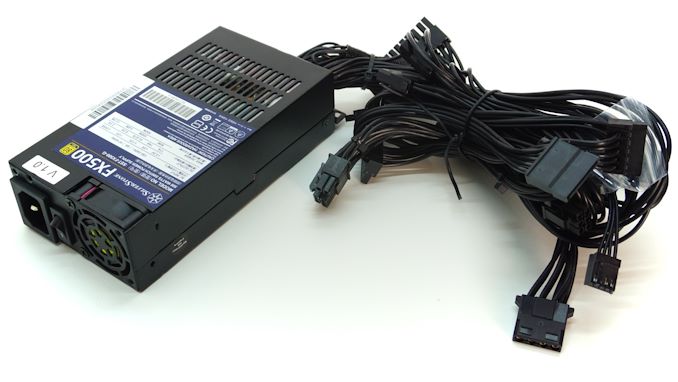
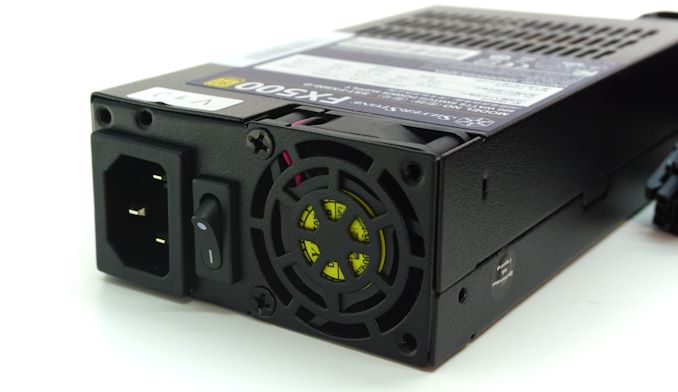
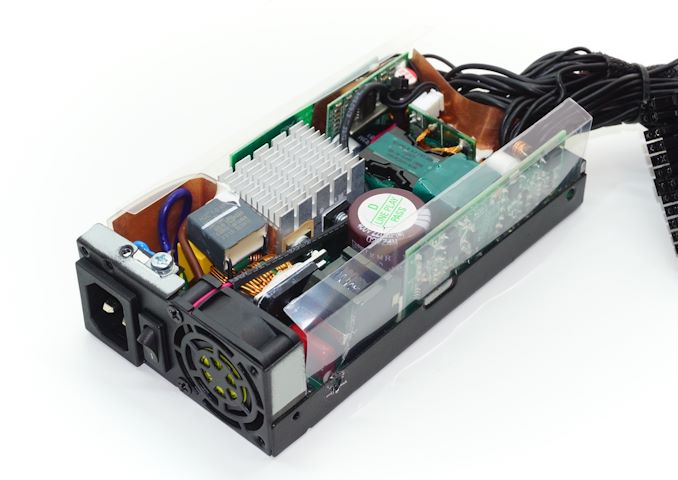

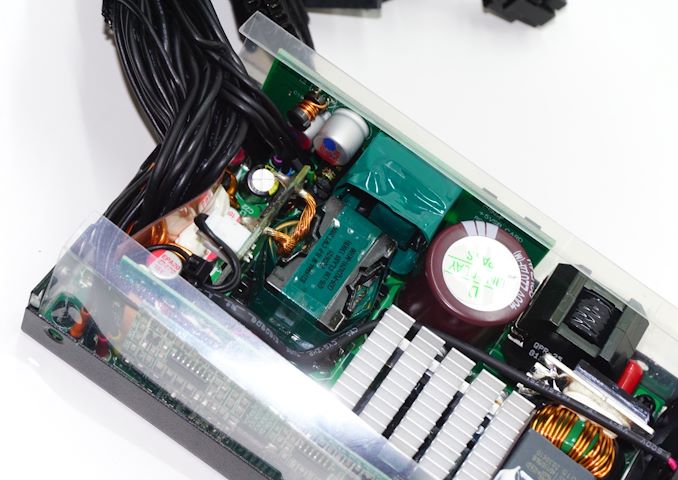
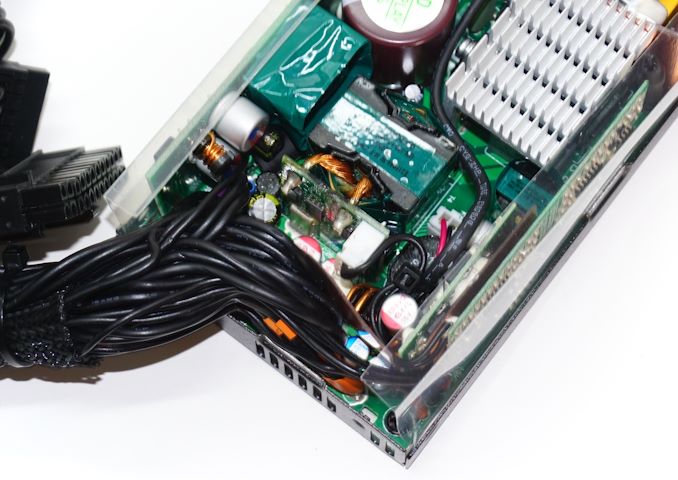








35 Comments
View All Comments
RealBeast - Thursday, November 12, 2020 - link
Doh, this looked promising for a small custom HTPC build until I read the sound issue.Lucky Stripes 99 - Thursday, November 12, 2020 - link
If you are looking for a nearly silent PSU for a SFF HTPC, good luck finding one. Almost all of the FlexATX PSUs use little 40mm fans that struggle to move air quietly. Even the 160W unit in my Inwin Chopin case was noticeable when using it as a HTPC. So I pulled the original PSU and replaced it with a fanless 12V DC-DC ATX pico-PSU style board paired with a 220W 12V laptop brick. Since the majority of the work is being done outside of the case, the Noctua HSF atop my AMD 3400g is enough to keep the DC-DC board cool. The downside of a pico-PSU style board is that it is a tight fit near my memory modules, but since nobody makes a FlexATX sized DC-DC supply outside of some stupidly expensive ($200+) industrial models, it was the route I was stuck with.rabw - Friday, November 13, 2020 - link
If you have room for a SFX PSU, the Corsair SF750 is passive up to 300W.Valantar - Friday, November 13, 2020 - link
There are options, but you need to abandon traditional form factors. I just built a silent, semi-fanless Renoir HTPC using a MeanWell RPS-200-12C AC-12VDC PSU plus a plug-in DC-ATX board. The PSU can run on convection cooling up to ~150w, which far outstrips the needs of my 4650G.Still, the market for this Silverstone unit is more for the people buying SFF cases off TaoBao - there are dozens if not hundreds of designs there for FlexATX PSUs and relatively large GPUs, and until now the only real PSU option has been refurbished server units. I'm expecting a lot of these will get Noctua fan swaps in short order though.
DanNeely - Thursday, November 12, 2020 - link
There's no way to move a meaningful amount of air with a 40mm fan that's not going to be loud.Sadly, it doesn't appear to have a low power fanless level. At least 50-100W should be doable (maybe a bit more); that's a mainstream laptop power brick, and if being inside a case means this won't have as easy passive cooling it's also several times larger than a brick.
MenhirMike - Friday, November 13, 2020 - link
If you only need 50-100W, then a PicoPSU is a great option. Looks like they have models that go up to 160W, I myself have an 80W Model (only with a 60W laptop power brick though) and it does what it needs to do.DanNeely - Friday, November 13, 2020 - link
If you never need more than that much power, then yes something like this would always be the wrong choice. ~100W before the fan came on would be for an SFF system with a discrete GPU that was near silent at idle and only made noise under load.Lucky Stripes 99 - Friday, November 13, 2020 - link
There are now numerous PicoPSU clones on the market with much higher peak wattage. HDPlex has 200W models, RGeek has 250W models, and G-Unique has 450W models.meacupla - Friday, November 13, 2020 - link
You can add an 80mm fan to the side if you cut a hole into the side of it.Of course, it's no longer Flex ATX sized at that point, but it's still smaller than an SFX PSU.
There are also TFX PSUs, but they tend to lag even further behind than Flex when it comes to higher power output.
Spunjji - Friday, November 13, 2020 - link
If you're after something quiet and don't need high power output then FSP make a 150W fanless model, the FSP150-50FGBBB. It doesn't have a lot of connectors, though, so you'd need to plan a build accordingly.